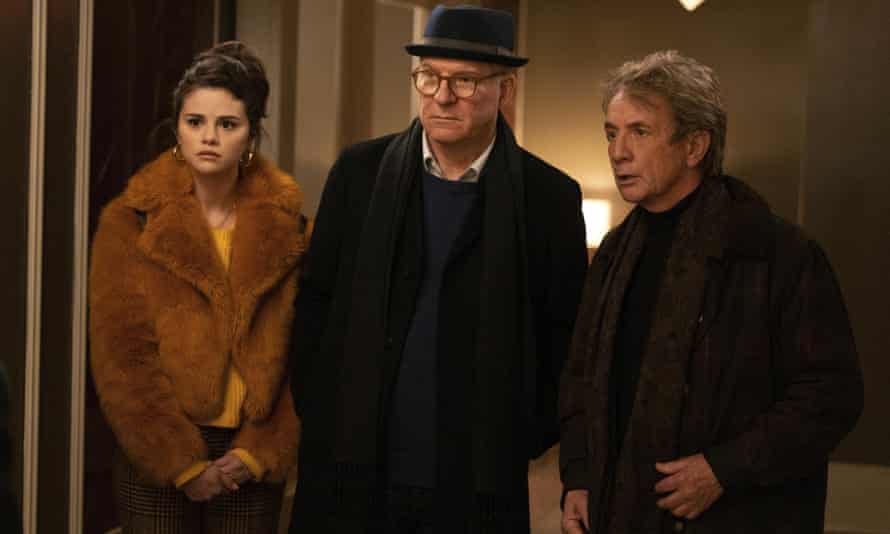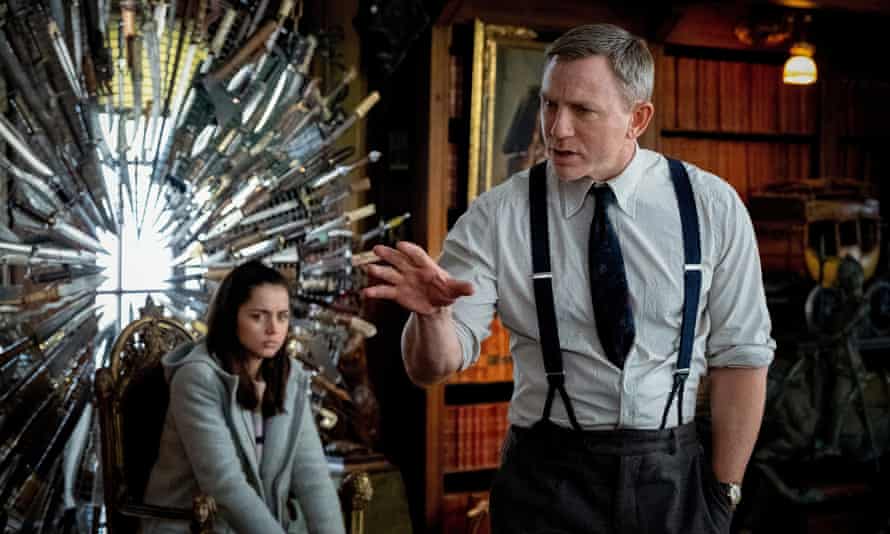Shared from Culture | The Guardian
Surprise is not much of a factor in Death on the Nile, Kenneth Branagh’s second gaudy, glossy all-star adaptation of an Agatha Christie chestnut. As with its predecessor, 2017’s marginally worse Murder on the Orient Express, this old-school mystery pulls from a source text so well-known that its twists have practically become embedded genre tropes; even if you don’t know the oft-told story, you can guess your way through it on cliches and character types alone.
Decked out with chintzy CGI, stiff performances and enough processed cheese to fill the Nile, it’s not exactly a good film – even “proficient” feels like a stretch – but it is an oddly comforting one. Watching Branagh’s absurdly moustachioed Hercule Poirot waddle through the motions of supposedly expert crime-solving – as bloodied, satin-clad corpses pile up around him – offers equivalent satisfaction to piecing together a jigsaw puzzle on a rainy Sunday: you know what the outcome is going to be, but there’s something soothing in putting it all together. If it’s a murder-mystery you aren’t already familiar with, so much the better, but the genre’s process-based pleasures are consistent either way. A good whodunnit, or even an attractively bad one, is the fictional equivalent of Marie Kondo organising your sock drawer.
Evidently, I’m not the only person to feel this way, since a full century after Hercule Poirot first appeared in print, the good old-fashioned whodunnit is suddenly hot property again. Branagh hasn’t been the only major film-maker to usher it back into popular culture. Neither of his Christie films can claim the hip currency of Rian Johnson’s nifty 2019 potboiler Knives Out, which blended wink-wink Christie homage – a rambling house full of oddball murder suspects, one eccentrically accented gentleman detective to figure it all out – with decidedly less retro class politics pulled straight out of Donald Trump’s America.
The cocktail worked more successfully than even Johnson surely imagined. After grossing over $300m worldwide and landing him an Oscar nomination, the film wasn’t just approved for a sequel but a whole megabucks franchise: Netflix paid a whopping $469m to secure the next two adventures of Detective Benoit Blanc, plunging the improbably cast Daniel Craig, newly escaped from his 007 stint, right back into franchise-lead duty. Pitting Craig’s neo-Poirot against a fresh batch of big-name subjects including Janelle Monáe, Kathryn Hahn and Ethan Hawke, Knives Out 2 (a cleverer title is doubtless to be confirmed) completed shooting in Greece last summer and will be out later this year, with its plot (naturally) kept strictly under wraps. Whether it matches the popular impact of its predecessor remains to be seen, but Netflix is counting on the accessibility of their release model to keep the series hot.
It’s not the streaming giant’s only whodunnit sequel of the year either. The generically titled Murder Mystery may not have made much of an impression on cinephiles in 2019, but like so many of the disposable comedies made under Adam Sandler’s ongoing Netflix contract, it was a stealth phenomenon with subscribers, and remains one of the streamer’s most-viewed originals. Nearly three years on, I couldn’t tell you a thing that happens in it – Sandler, Jennifer Aniston, murdery hijinks on a luxury yacht – but Murder Mystery 2 is inevitably in production just the same, the Lidl adjunct to Johnson’s Waitrose caper. Expect both franchises to run in parallel for some time.
Somewhat more enticing is See How They Run, a debut feature from the British TV director Tom George that appears to be all plummy throwback charm: Sam Rockwell in a fedora and walrus ’tache as a jaded inspector, Saoirse Ronan as his naive police-constable sidekick, a case involving multiple murders in London’s theatre scene. You can practically hear the warm creak of the floorboards; the classy supporting cast includes Ruth Wilson, David Oyelowo and Harris Dickinson. (Well, there’s no sense in a rogue’s gallery of faces you don’t recognise.)

Meanwhile, just as the Lego Movie co-creator Chris Miller’s murder-mystery comedy series The Afterparty is taking off on Apple TV – with Tiffany Haddish as a detective investigating a murder at a high-school reunion – the 2022 release slate also offers Reunion, a low-profile film with an identical-sounding premise and a cast including Lil Rel Howery and Billy Magnussen. One suspects The Afterparty will dwarf it in publicity stakes, though Miller’s series has yet to match the noise generated by TV’s biggest new whodunnit hit: sparked by the unlikely combination of Selena Gomez with Steve Martin and Martin Short, Only Murders in the Building built enough of a devoted word-of-mouth following last year to be renewed for a second series.
Co-created by Martin himself, the arch, playful Only Murders in the Building boasts a postmodern premise that may in itself partly explain the genre’s grand resurgence. Forgoing a detective figure, the film instead focuses on three neighbours in an Upper West Side apartment block attempting to unravel a suspicious death in the building on their own, driven by their own shared fascination with true-crime podcasts. The rise of true-crime storytelling over the last decade – whether in podcast or Netflix docuseries form – seems an obvious cue for fiction’s re-embrace of the procedural mystery.
Such true-crime works may often be cloaked in solemn journalistic trappings and an air of social import, but they often lure in their audience on the same basis as any Agatha Christie potboiler – appealing to our collective lurid fascination with human evil, and our rational urge to piece together some manner of explanation or corrective to it all. At a time when public trust in official law and order is at an understandable low, it’s perhaps no surprise that escapist stories allowing the audience to solve crime for themselves are back in vogue. That private detectives like Poirot and Benoit Blanc exert authority without being cops seems key to their renewed appeal, though they’re also mere proxies for the viewer’s own mental sleuthing.
Images and Article from Culture | The Guardian

